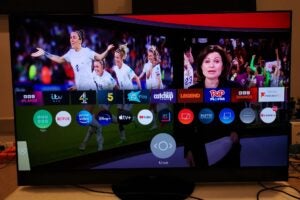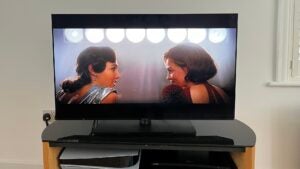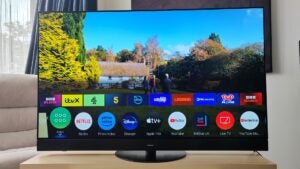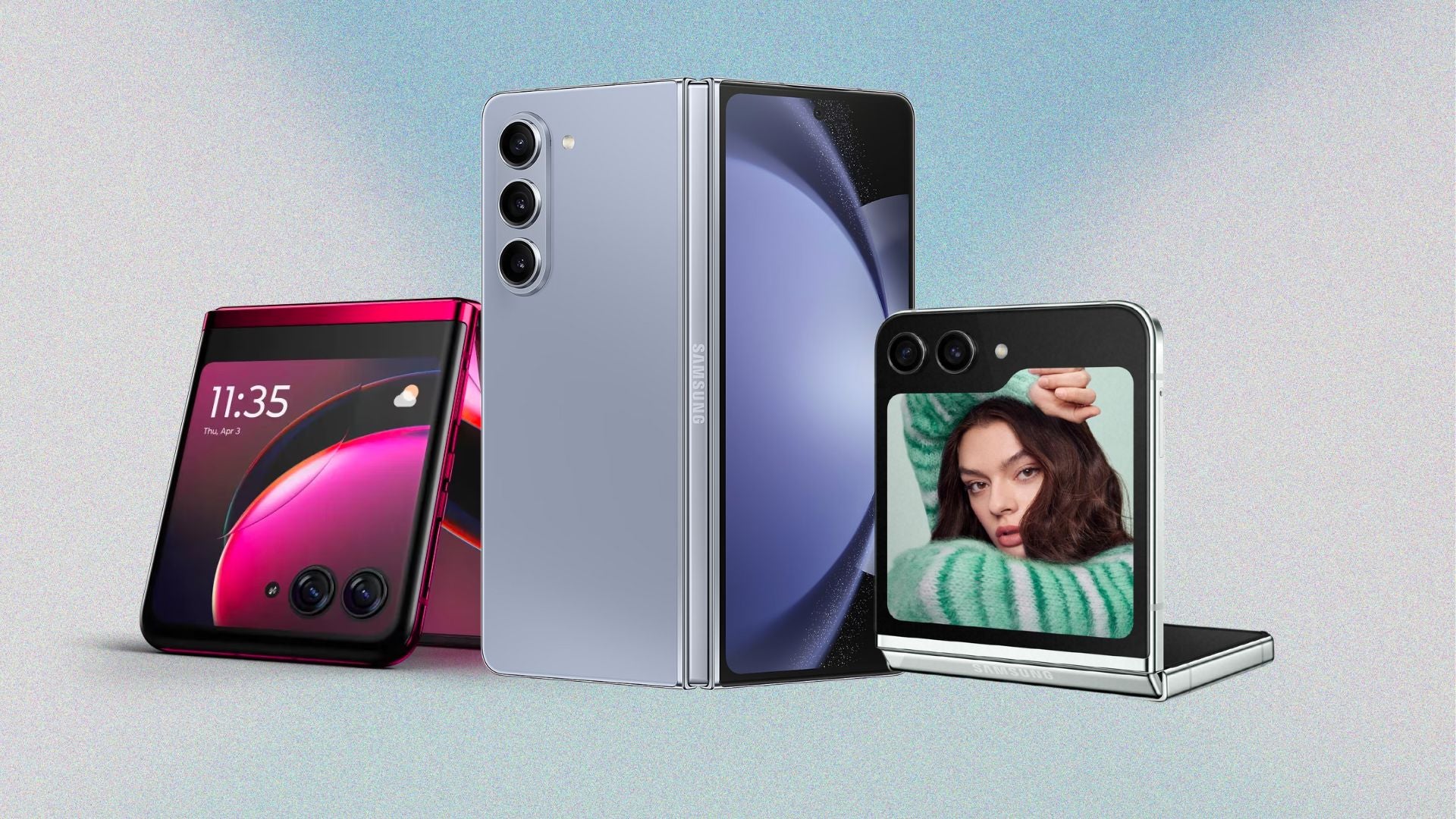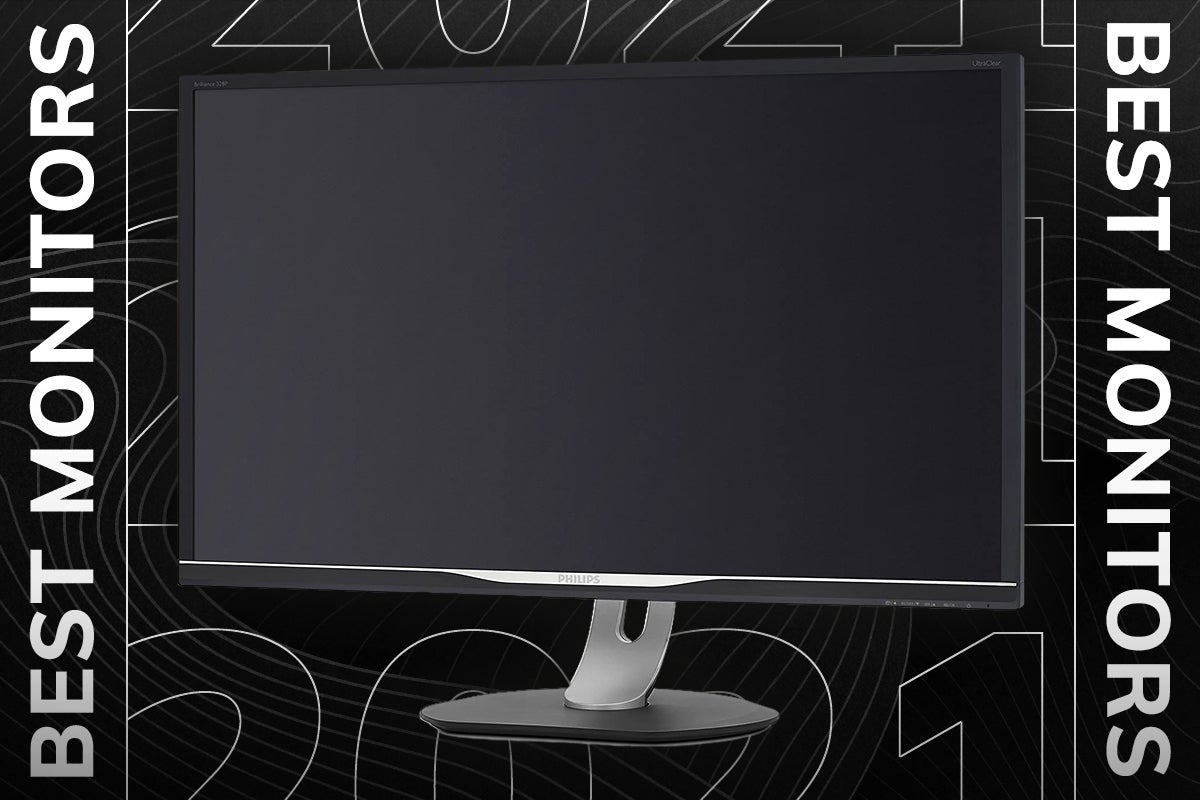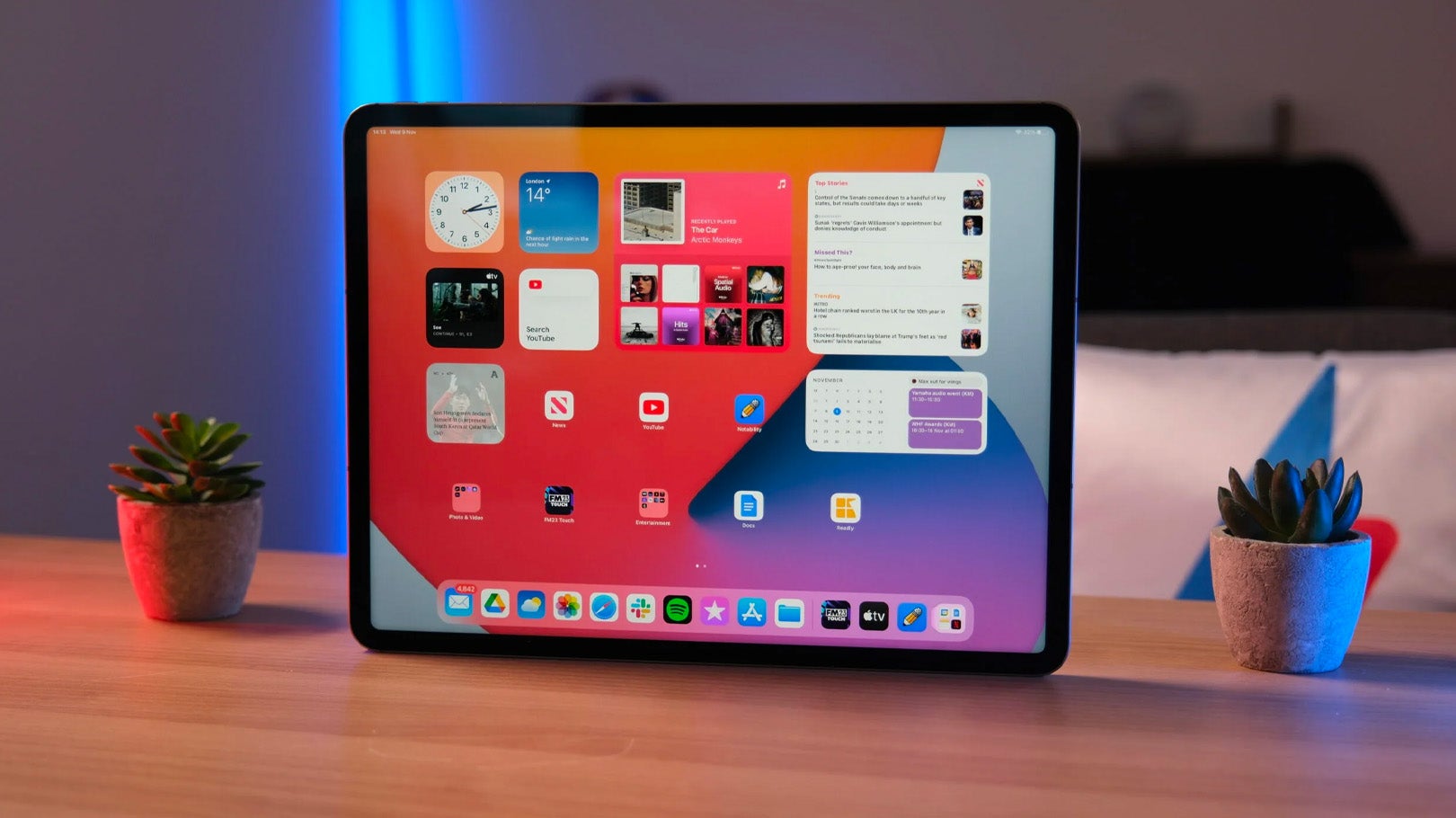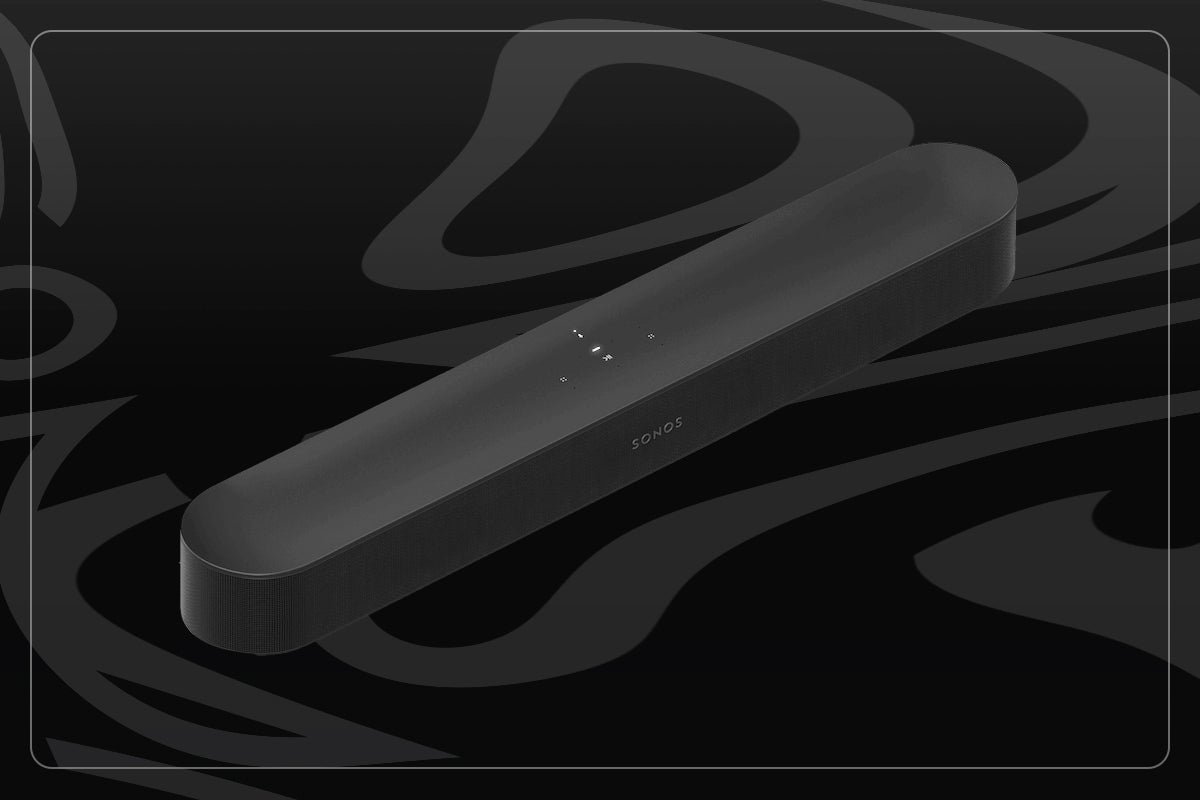Best Panasonic TV 2024: The best 4K LED and OLED sets
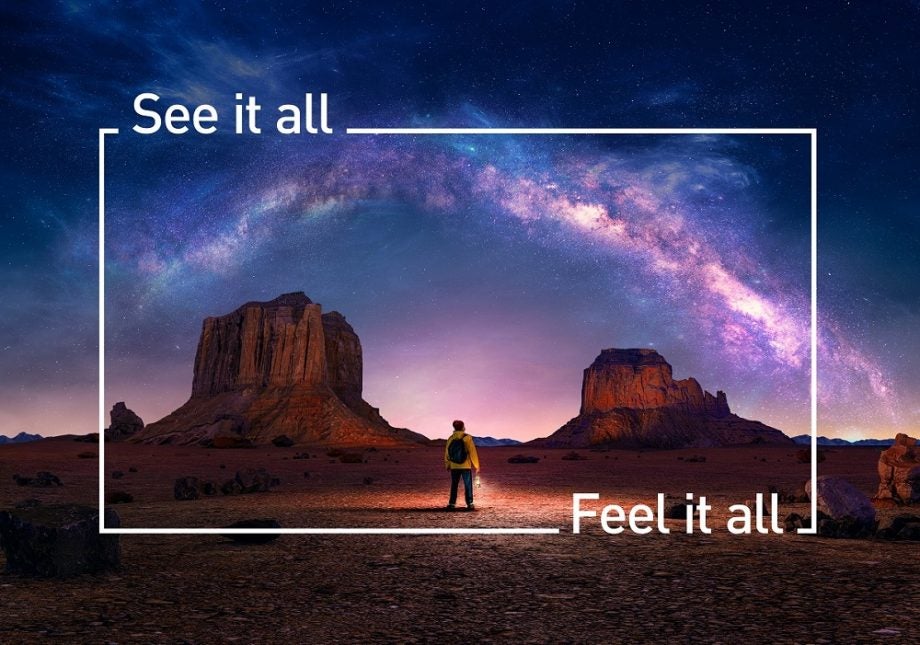
Once you’ve sampled a brand you’re happy to stick with, you’re likely to keep coming back, and if that brand is Panasonic, we have a choice pick of TVs to upgrade to.
From OLEDs to affordable LEDs, Panasonic is reliable name in the field of televisions. If you’re looking to upgrade from an older set, we’ve created this list of the best Panasonic TVs we’ve tested. We focus on picture quality, sound quality, gaming features and ease of use.
To get the best accurate results, we use each TV extensively, running measurable tests over several days to gauge their performance, and generally living with them like anyone else would
If a Panasonic TV doesn’t tickle your fancy, be sure to check our lists of the best Samsung TVs, best LG TVs and our selection of the best TVs in general.
Best Panasonic TVs at a glance
- Best Panasonic TV: Panasonic MZ2000 – check price
- Best all-in-one Panasonic TV: Panasonic LZ2000 – check price
- Best 65-inch Panasonic OLED: Panasonic MZ1500 – check price
- Best Panasonic small OLED: Panasonic LZ980B – check price
- Best mid-range Panasonic OLED: Panasonic LZ1000B – check price
- Best mid-range Panasonic LCD TV: Panasonic LX800B – check price
How we test
Every TV we review is put through the same set of tests to gauge its picture performance, usability, and smart features.
Tests are carried out over several days and are done by eye but supported with technical measurements. Testing by eye involves an expert watching a wide range of material to understand and determine a TV’s performance in fields such as brightness, contrast, motion processing, colour handling and screen uniformity.
We’ll consider the design of the TV in terms of build quality, study the spec sheets and see if the TV’s connections are up to spec, as well as playing video and audio content to ensure that the set handles playback as it claims. We also take note whether a product’s compatible formats and features are in line with industry trends or not to gauge whether it’s relevant for you.
Comparison to other related and similarly priced products is also important, to see if it’s missing any vital features and whether it impresses as a whole. After all this, we’ll come to a judgement on how the TV performs as a whole.
If you want to learn more, please visit our detailed page about how we test televisions.
- Dynamic 4K image quality
- Multi-HDR support
- Game Mode Extreme
- 360 Soundscape Pro system could be overkill
- Only two 4K 120fps HDMI inputs
- Refined, naturalistic and endlessly convincing images
- Every HDR standard catered for
- Panasonic’s best-ever smart TV interface
- Could be brighter
- Could be slimmer
- Could sound fuller
- Natural looking colour performance
- Quick to set up
- Android support
- Not the most vivid HDR performance
- Sluggish Android performance
- Not for high-end gaming
- Fabulously engaging HDR performance
- Impactful sound system
- Accessible smart interface
- Competitive gaming features
- Currently more expensive than close rivals
- LG better for premium gaming experience
- Limited app selection
- Excellent HDR performance
- Dolby Vision IQ HDR support
- 360° Soundscape Pro Dolby Atmos system
- Game Board UI
- Only two HDMIs support 4K 120Hz
- Price
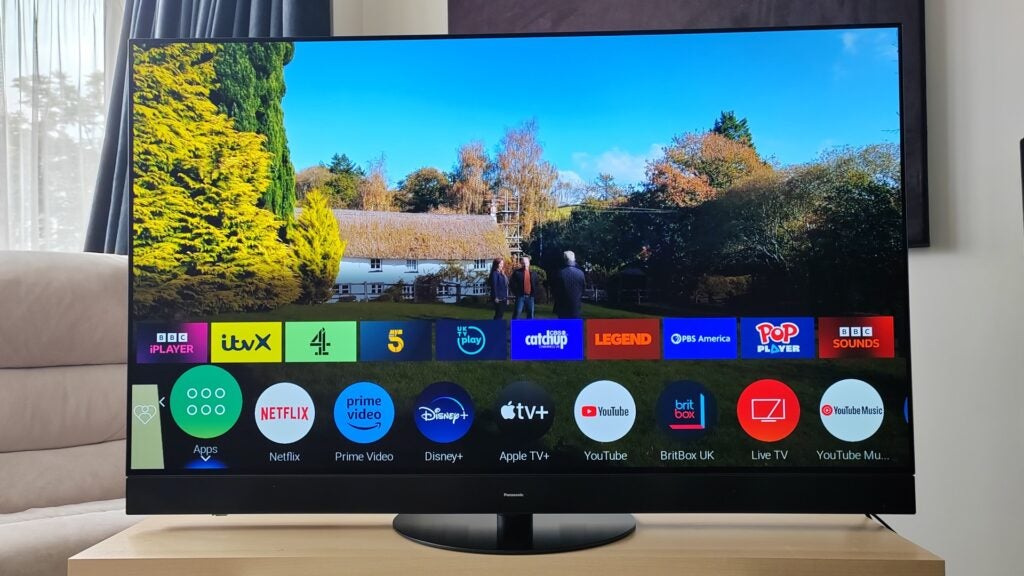
Panasonic TX-55MZ2000
Best Panasonic OLED TV
Pros
- Excellent HDR performance
- Dolby Vision IQ HDR support
- 360° Soundscape Pro Dolby Atmos system
- Game Board UI
Cons
- Only two HDMIs support 4K 120Hz
- Price
We say it every year but Panasonic continues to surpass themselves with each flagship OLED. We’re confident that the MZ2000 is its best yet.
The biggest change comes in the adoption of the MLA OLED panel from LG that Panasonic has customised to its own design. The benefit is a huge jump in brightness with the Standard mode preset registering 1500 nits on a 5% window during our measurements, and a whopping 1877 nits on a 10% patch in Dynamic mode.
Highlights burn with intensity, images shine with punch and depth, contrast is excellent, skin tones are naturally conveyed and reds and blues take on a rich, deep look. However you cut it, the MZ2000 offers sensational picture quality. With support that covers all HDR formats: HDR10, HLG, Dolby Vision IQ and HDR10+ Adaptive, every source looks excellent on the MZ2000.
We found sound quality was equally top notch with the side- and upfiring speakers helping to convey a large presence in a living room. It remains light on bass, however, failing to give bass-heavy scenes the emphasis they require.
Elsewhere not much has changed but that isn’t a negative in our opinion. My Home Screen remains easily accessible and customisable, with Freeview Play adding the UK catch-up apps along with big hitters in Netflix, Disney+, Apple TV+ and others. The Game mode has been updated with two modes to choose from in Game and True Game, the latter offers accurate colour performance much like Filmmaker mode does for film and TV.
We measured input lag at 14.5ms, which isn’t as good as models from other brands and brisk enough. HDMI 2.1 technologies such as VRR, ALLM, 4K/120Hz, but they’re only available on two HDMI inputs. The MZ2000 is an undoubtedly expensive TV, but one of the best of its kind.
Reviewer: Steve May
Full Review: Panasonic MZ2000
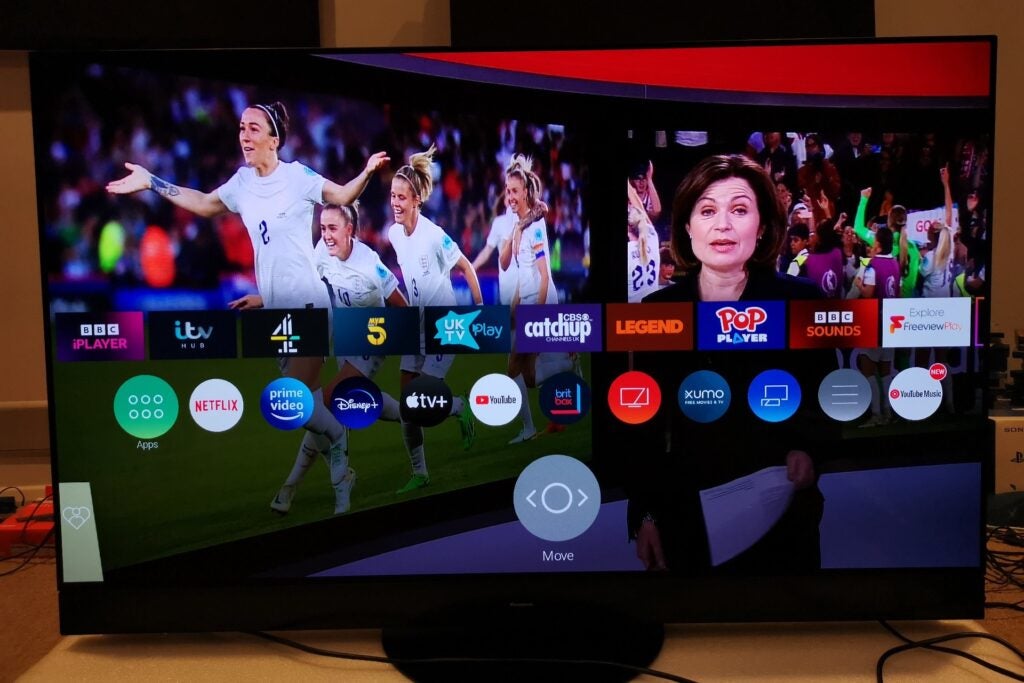
Panasonic TX-55LZ2000
Best Panasonic TV
Pros
- Dynamic 4K image quality
- Multi-HDR support
- Game Mode Extreme
Cons
- 360 Soundscape Pro system could be overkill
- Only two 4K 120fps HDMI inputs
The LZ2000 is Panasonic’s flagship TV or 2022 and as we’ve come to expect from the Japanese brand, it’s exceeded expectations yet again with superb image quality and impressive Dolby Atmos audio.
The design is typically understated and not intended to draw much attention to itself but simply melt into its surroundings. In terms of features there’s Freeview Play for catch-up and on-demand TV, and Panasonic has added the likes of Disney+ and Apple TV+ to its My Home Screen interface.
It’s also a respectable choice for gamers after a high-end panel. We measured input lag at 14.5ms (no improvement over the JZ2000), and with the Game Control board there is the ability to optimise gaming settings on the fly. HDMI 2.1 features are supported too with the likes of variable refresh rate, auto low latency mode and 4K/120Hz all onboard.
All HDR formats are included too, such as HDR10, HLG, Dolby Vision IQ and HDR10+ Adaptive. The image quality is finely-tuned for bright and dark rooms with the help of the TV’s light sensor, and we found colour volume has improved, especially the colour blue. The low light performance has also been improved, with more detail visible in the darkest parts of the image.
With the OLED EX panel from LG Display (but made to Panasonic’s custom specs), we benchmarked brightness at 966 nits in Standard mode, which makes the Panasonic one of the brightest OLEDs on the market and certainly among the brightest we’ve reviewed from Panasonic. In general, the average picture level is brighter, which helps to make all types of content pop off the screen.
The Dolby Atmos speaker system has had a few more tweaks over the JZ2000 model, and again it’s an area where we found the LZ2000 to be an improvement over the older model, the 360° Soundscape Pro system yielding plenty of width and height with Atmos soundtracks.
Reviewer: Steve May
Full Review: Panasonic LZ2000

Panasonic TX-65MZ15000B
Pros
- Fabulously engaging HDR performance
- Impactful sound system
- Accessible smart interface
- Competitive gaming features
Cons
- Currently more expensive than close rivals
- LG better for premium gaming experience
- Limited app selection
If you find that the MZ2000 is a) too expensive and b) you want to mate your own sound system to a TV, then the MZ1500 is your best bet in Panasonic’s OLED range.
Essentially carrying over the panel from the LZ2000, the picture performance is uniformly excellent across all sources. Peak brightness isn’t as bright as the MZ2000, we measured a high of around 1100 nits, but that’s more than enough to ensure that the MZ1500 doesn’t have to rely on tone mapping to display high brightness HDR images.
Reds have a deep, saturated look to them, contrast is excellently conveyed with rich blacks, and highlights are conveyed with pinpoint precision. Skin tones can take on a warm look that perhaps isn’t the most natural, especially in Dolby Vision, but does make for an attractive image. Upscaling of lower-than-4K sources is impressive, with good clarity and detail afforded to 1080p and DVD content. Motion processing also impresses in the right mode, set it to higher levels and judder and noise become visible.
Sound quality is better than expected for a flatscreen TV. It can get a bit hoary at louder volumes, but in general vocal clarity is good (but could be better), the soundstage depicted is both tall and wide, and bass has punch and weight to it. An external sound system would improve further, but we wouldn’t say you should rush out and get one if you don’t already have a soundbar.
My Home Screen remains simple to use, and while there’s not as many streaming apps available as other brands, all the notable apps in video are included, and Freeview Play adds the UK catch-up apps.
Like other OLEDs in the 2023 Panasonic range, there’s Game and True Game mode, the latter displays accurate colours for gaming. Input lag is 14.3ms, which is speedy, though other brands offer a faster performance out of the box.
Reviewer: Kob Monney
Full Review: Panasonic MZ1500
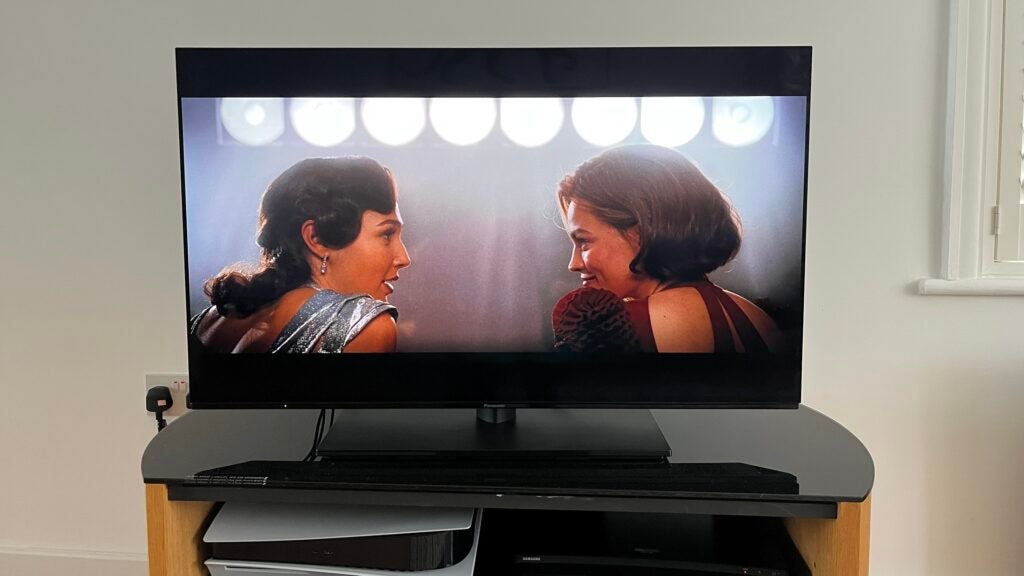
Panasonic TX-42LZ980
Best small Panasonic OLED
Pros
- Refined, naturalistic and endlessly convincing images
- Every HDR standard catered for
- Panasonic’s best-ever smart TV interface
Cons
- Could be brighter
- Could be slimmer
- Could sound fuller
Like LG with its OLED42C2, Panasonic has been courting gamers with its small OLED sets, and the TX-42LZ980 is a great if more expensive alternative to LG’s models.
Just like the rest of the TVs in this list, it’s a minimalist looking set with its gunmetal finish, tiny bezels but a central stand instead of feet to support the screen. The stand doesn’t swivel, unfortunately, but our reviewer found it to be compact enough to not require a big surface to sit on.
We found connectivity to be good for a small screen with two HDMI 2.1 ports, one of which supports eARC for passing out lossless audio to a compatible sound system. Gamers have auto low latency mode, variable refresh rate, AMD FreeSync Premium and Dolby Vision Gaming (up to 60Hz) to enjoy. We measured latency at around 14ms.
With its My Home Screen interface, Panasonic offers an excellent interface, once that’s clean and features every high-profile video streaming and catch-up service whether it’s through individual apps or through Freeview Play.
Like the JZ2000 and LZ2000 above, the LZ980 supports all the main HDR formats, carrying Dolby Vision IQ and HDR10+ Adaptive to help adapt its visuals to match the lighting conditions any room (therefore preserving detail no matter the lighting conditions).
While it doesn’t boast the same OLED EX panel that features in the LZ2000, our reviewer found that it produced a remarkably accomplished picture performance, with white tones that are bright and cleanly described along black tones that are deep and convincing producing an excellent sense of contrast.
The overall colour palette is wide-ranging, vibrant and convincing. Skin-tones are life-like, motion is handled extremely well and in terms of upscaling lower quality content it’s a very competent effort. In terms of the audio it’s far weaker than its picture performance, sounding stressed and thin. We’d recommend getting a soundbar to give it a boost.
Reviewer: Simon Lucas
Full Review: Panasonic LZ980
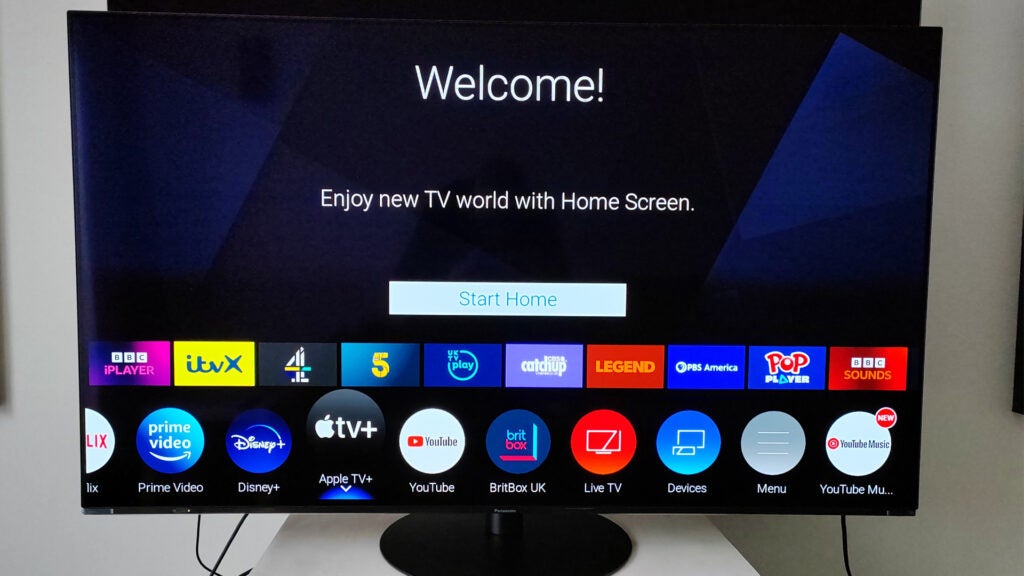
Panasonic TX-55LZ1000B
Best mid-range Panasonic OLED TV
Pros
- Refined picture quality
- Game Mode Extreme Control Board
- Dolby Vision and HDR10+ Adaptive support
Cons
- Average audio performance
- Only two HDMI inputs are 4K/120Hz capable
The LZ1000 sits in the middle of Panasonic’s OLED fleet, and is arguably the biggest surprise in the line-up with its picture performance.
Our reviewer felt this was a great screen for home cinema fans, thanks to cinematic picture modes that blend excellent colour fidelity with punchy contrast. It’s able to deliver a consistent and balanced picture, with very good near-dark shadow detail, excellent reproduction of skin tones and a HDR performance that offers good levels of of peak brightness, measuring 900 nits on a 5% HDR window. HDR support also expands to Dolby Vision IQ and HDR10+ Adaptive.
There’s nothing outlandish about the design, which by all accounts should suit any décor it’s in. We did find the swivel stand useful to avoid the glare of ambient light or when there’s a need to tilt the screen to a seating position that’s off-axis. There’s 4K/120Hz support but only two of its HDMI inputs support the 2.1 standard with eARC on input 2. If you have more than two compatible HDMI 2.1 devices, you’ll have to decide which ones go into where.
The Game Mode Extreme Control Board is new, and is a dedicated UI that gathers relevant gaming info in one place. There’s Dark Visibility adjustment, to help you see better in the shadows, plus frame rate, VRR, and resolution details. We measured input lag at a good 14.5ms.
The My Home Screen interface remains simple to use, unobtrusive and easy to customise. There’s a solid selection of apps to pick from (though not as many as the Android-toting LX800B). Support for Freeview Play brings all the UK catch-up and on-demand apps such as BBC iPlayer, ITVX and All4.
The least noteworthy aspect about the LZ1000 is its built-in speaker system. It’s nowhere near as powerful as the LZ2000 with only 30W available, and while it’ll do a job, you’ll want to add a soundbar system to really give this TV’s audio some oomph.
Reviewer: Steve May
Full Review: Panasonic LZ1000
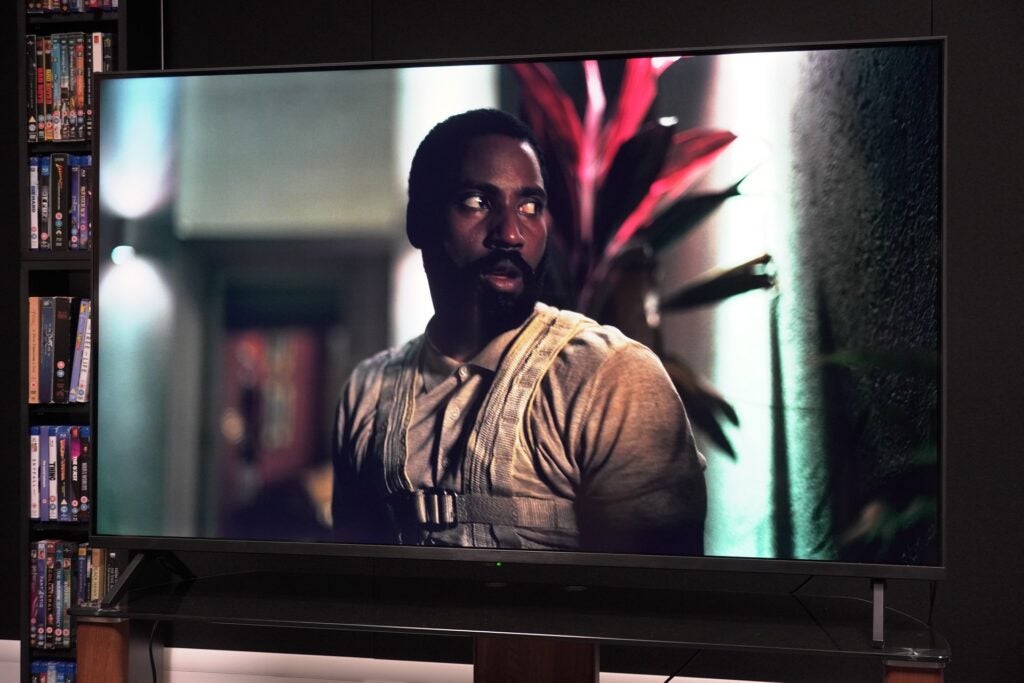
Panasonic TX-55LX800B
Best midrange Panasonic TV
Pros
- Natural looking colour performance
- Quick to set up
- Android support
Cons
- Not the most vivid HDR performance
- Sluggish Android performance
- Not for high-end gaming
The LX800B is Panasonic’s midrange LCD TV, the type of model that looks offer a good balance of value and performance, and for the most part we feel it achieves it..
There’s not much to write home about in terms of its looks, It hits the same utilitarian vibe the rest of Panasonic’s 2022 line-up hits, melting away into a room rather than standing out. It is easy to assemble, our reviewer managed to put it together in less than three minutes, a case of screwing in the feet. Those feet are placed at either ends of the TV, which is not too helpful if you don’t have a wide piece of furniture to place it on.
The biggest change from previous models is the adoption of Android TV for the interface. However, despite the wealth of apps it offers, we found the speediness of the interface to be disappointingly slow. That and HDR and Atmos support for the apps isn’t as comprehensive as other interfaces, with Disney+ only supporting 5.1 audio. Freeview Play is include for UK catch-up and on-demand apps.
We wouldn’t necessarily recommend this screen as one for gamers after a high-end panel either. Though input lag is a pacy 10.5ms, there’s no support variable refresh rates or 4K/120Hz gameplay. That said it should be a good choice for most gamers or simply want a good gaming experience.
Google Assistant is supported for voice control and there are three HDMI inputs, which is less than we expected, and there’s no eARC support either, so the TV can’t pass through lossless Dolby Atmos audio to a connected a soundbar.
The TV’s peak brightness is another area that’s less than we expected. We measured Cinema mode to be quite dim (342 nits) with Filmmaker mode hitting 507 nits. The LX800B does support both Dolby Vision and HDR10+ to help its HDR performance, but black levels aren’t the strongest with some backlight bleed noted. Upscaling of less than 4K sources is good, with natural colour reproduction and good levels of detail.
The TV’s Dolby Atmos compatible sound system is an aspect that’s better than we expected. It’s spacious, high frequencies are sharp, the midrange is clear and detailed and bass is decent. A soundbar would best it but we wouldn’t say there’s a rush to add one.
Reviewer: Kob Monney
Full Review: Panasonic LX800B
We also considered…
We’ve reviewed
See all reviewsFAQs
OLED stands for Organic Light Emitting Diode. It’s a display made up of self emissive pixels, each of which can create its own light. A bright pixel can sit next to a dark pixel to help create deep black levels and high contrast beyond that of traditional displays. The lack of a backlight also means these displays can be thinner than other types of TVs.
HDR10+ is a HDR format supported by Panasonic and Samsung as a free to use, open platform alternative to Dolby Vision. It adds dynamic metadata on top of the core HDR10 signal that tells a TV how it should adjust the brightness, colours and contrast of content for the most optimal picture quality.


